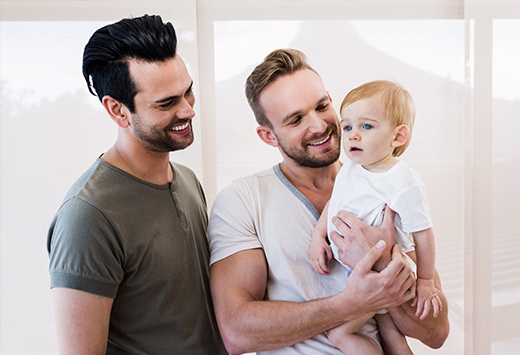Normalizing adoption within adoptive families is incredibly important as adopted children need to feel affirmed, connected and secure in their families. Some adoptees, especially those adopted transracially, may struggle navigating family dynamics as differences in race can often feel like an isolating factor. What does it look like to normalize adoption within the family itself? Here are some recommendations for adoptive parents and families:
1.) Talk about adoption. Adopted individuals need their parents and families to talk openly about adoption. It should not be a secret or a topic that is avoided and only brought up at a certain point. Waiting until a certain age or developmental milestone to talk to your child about adoption is simply not appropriate and can be incredibly damaging to your relationship with your child. Honesty and openness lay a solid foundation to healthy attachment for your adopted child.
Additionally, parents can and should initiate and engage conversations about adoption without waiting for their adopted child to bring them up. It’s incorrect to assume that your child does not want to talk about adoption just because they do not bring it up directly.
2.) Surround yourself with other adoptive families. The more adoption is represented outside the home, the more affirmed your adopted child is going to be. We encourage you to find other families within your local community that have adopted and allow them to do life with you. If you do not know where to find these families, do some research, reach out on social media, or connect with adoption agencies in your area. For families that choose to adopt transracially, this is especially important for your adopted child. They need to see families and dynamics similar to their own.
3.) Find little ways to represent adoption in your daily life. Similar to surrounding yourself with other adoptive families, finding little ways to make adoption feel “normal” can be extraordinarily affirming to adopted children. Some ways to do this could be buying books where adopted families are represented or finding movies or shows that portray blended or adoptive families. You should not go out of your way to force representation, but subtle, gentle reminders that adoption is “normal” is impactful in the long run.
4.) Adopt more than one child. We know not all families can do this, but we have found this to be a beneficial thing families can do for their adopted children, especially when choosing to adopt transracially. Being the only transracial adopted child in a family can feel isolating and lonely. When adopted children have other adopted siblings, especially of the same race, it can provide a sense of normalization that is often missing.
5.) Be open to exploring biological ties. Parents can also normalize adoption by not ignoring or avoiding conversations around birth parents and families. Your adopted child may wish to find and/or connect with their biological family, and while this can be hard for adoptive parents, your child needs you to lean into this idea. Connection to biological ties can be life-giving and healing for adoptees. For adoptive parents, we strongly encourage you to normalize this and support your child’s curiosity. Embrace the discomfort of it and be willing to talk about it with your child, even if you do not want to. They need to feel supported and affirmed in learning and connecting with their biological family. This part of adoption can feel messy, but it is necessary and normal.
Families that navigate adoption well are committed to making sure their adopted child or children feel an inherent sense of belonging and connection within their home. This happens by prioritizing their needs and normalizing adoption. When families do this, it creates safer environments for children that are adopted as well as space for them to process and own their story.
Written by: Ramya Gruneisen




